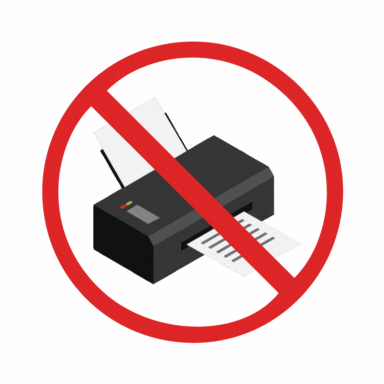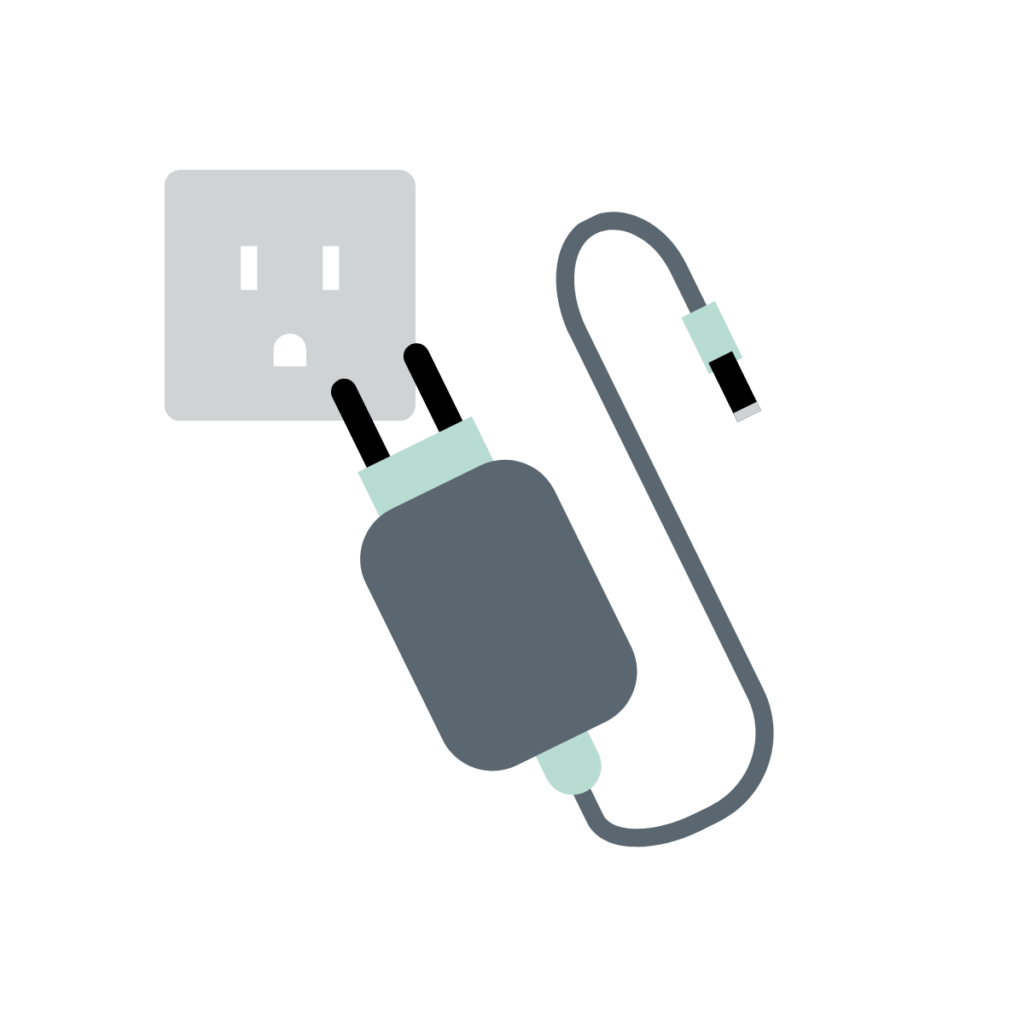No matter the title of your role or the location you work in (office, home, coffee shop), you have the potential to contribute to a better future! Read on to explore 14 easy and effective ways you can go green at work, reduce your carbon footprint, and save money in the long run.

1. Bring a Reusable Water Bottle
![]()
Ditch those single-use plastic water bottles and invest in a reusable one. Not only will you be reducing plastic waste, but you’ll also save money in the long run. For remote workers, using a reusable water bottle at home is equally essential for reducing plastic waste.
Decision-makers: Consider installing water filtration systems or water coolers to make it easier for your staff to refill their bottles.
2. Organize an Office Carpool
![]()
Reduce your carbon emissions from commuting by carpooling with colleagues who live nearby. Take turns driving to work, save on gas money, and reduce traffic congestion and pollution. Remote workers can also carpool or use public transportation when commuting to the office or client sites.
Decision-makers: Consider offering incentives to promote this eco-friendly practice.

3. Pack Your Lunch in Reusable Containers
![]()
Opt for reusable containers or bento boxes instead of disposable ones or plastic bags for your lunch. This simple switch can significantly reduce lunchtime waste. You can even start a lunch container swap or sharing program at the office.
Pro-Tip: Invest in high-quality, leak-proof containers that can be easily washed and reused for years to come.
4. Set Up Recycling Bins
![]()
If your workplace lacks dedicated recycling bins, take the initiative and set them up. Label paper, plastic, and aluminum bins to make recycling easy for everyone. Place the bins in high-traffic areas like break rooms, copy rooms, and near workstations to encourage participation.
Decision-makers: Consider partnering with a local recycling service or waste management company to ensure proper disposal and recycling of collected materials.

5. Avoid Printing When Possible
![]()
Before hitting that print button, ask yourself if it’s really necessary. Opt for digital documents and presentations whenever possible to reduce paper waste and save on printing costs. Remote workers can also embrace paperless practices by sharing digital documents and using e-signatures for contracts.
Pro-tip: Encourage staff and peers to adopt paperless practices by sharing documents via email, cloud storage, or internal messaging systems.
6. If Unavoidable, Print Double-Sided
![]()
If you must print documents, always opt for double-sided printing. This small change can cut your paper consumption in half, saving trees and reducing waste.
Pro-tip: Set the double-sided printing option as the default on all office printers and encourage colleagues to proofread documents carefully before printing to minimize waste.

7. Unplug Electronics When Not in Use
![]()
Reduce phantom energy consumption by unplugging devices like computers, printers, and chargers when they’re not being used.
Pro-tip: Invest in smart power strips that automatically cut off power to devices not in use or encourage your IT department to set up energy-saving settings on office equipment.
8. Organize an Office Cleanup Crew
![]()
Gather a group of environmentally conscious coworkers and organize a regular cleanup crew. Whether it’s picking up litter around the office or maintaining a community garden, this activity can foster team building while promoting a cleaner, greener workspace. Remote workers can participate in community cleanup events or organize virtual challenges to encourage eco-friendly activities.
Pro-tip: Coordinate with building management or local authorities to ensure proper disposal of collected waste and consider adopting a nearby park or nature trail for regular cleanups.

9. Bring Your Own Utensils
![]()
Reduce plastic waste by bringing your own reusable utensils from home instead of using disposable ones from the office kitchen.
Decision-makers: Consider providing reusable cutlery and dishware in the break room or starting a utensil lending library for those who forget to bring their own.
10. Embrace Digital Note-Taking
![]()
Switch to digital note-taking apps or tablets instead of relying on physical notebooks. This saves paper and makes it easier to organize and share your notes with colleagues. Digital note-taking is especially beneficial for remote workers, as it eliminates the need for physical notebooks and paper waste.
Pro-tip: Explore note-taking apps like Evernote, OneNote, or Google Keep, and encourage your staff and peers to adopt paperless note-taking practices during meetings and presentations.

11. Donate Your Work Clothes
![]()
Instead of throwing out work clothes, consider donating them to an organization like Dress for Success . This reduces textile waste and provides professional attire for those in need.
Pro-tip: Explore local thrift stores or consignment shops for affordable, eco-friendly wardrobe options.
12. Maximize Natural Lighting
![]()
Take advantage of natural lighting by opening blinds and curtains whenever possible. This simple practice can reduce the need for artificial lighting and save energy. For those working from home, position your workspace near windows or use natural light lamps to reduce the need for artificial lighting.
Decision-makers: Encourage your facilities team to strategically position workstations near windows and install skylights or light shelves to maximize natural light exposure. Also, consider installing light sensors or timers to automatically adjust artificial lighting based on natural light levels.

13. Invest in Energy-Efficient Lighting
![]()
If your office relies on artificial lighting, consider switching to energy-efficient LED bulbs. These bulbs consume less energy and have a longer lifespan, reducing your carbon footprint and saving money on utility bills.
Decision-makers: Work with your facilities team to gradually replace outdated lighting fixtures with LED alternatives, and encourage using desk lamps to supplement general office lighting.
14. Encourage a Green Mindset
![]()
Lead by example and encourage your coworkers to adopt eco-friendly practices. Share tips, organize green team meetings, and celebrate successes together. A collective effort can go a long way in creating a sustainable workplace culture.
Consider implementing a recognition program or incentives for employees actively participating in green initiatives. You can also organize eco-friendly team-building activities or workshops to educate and inspire your colleagues. Employers can create virtual green teams or online forums to engage remote employees in eco-friendly initiatives and share best practices.
Final Thoughts
![]()
By implementing these easy and effective strategies to go green at work, we can make a positive impact on our planet and create a more sustainable workplace. Remember, every effort (small or big!) counts. So, let’s roll up our sleeves and embrace these eco-friendly practices this month and beyond!

